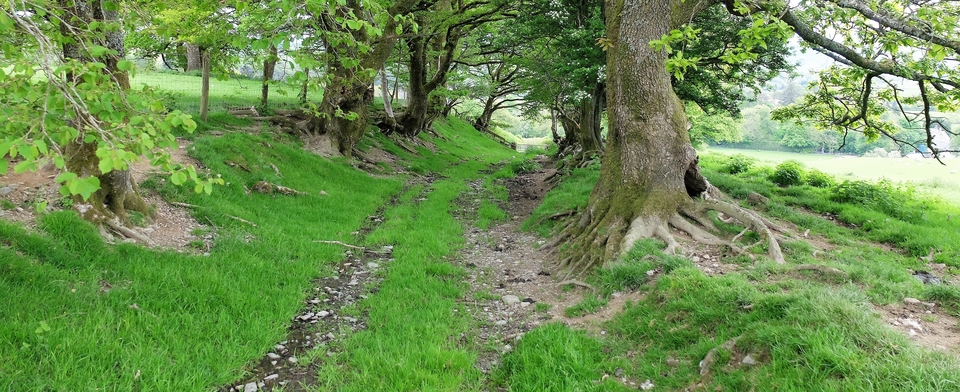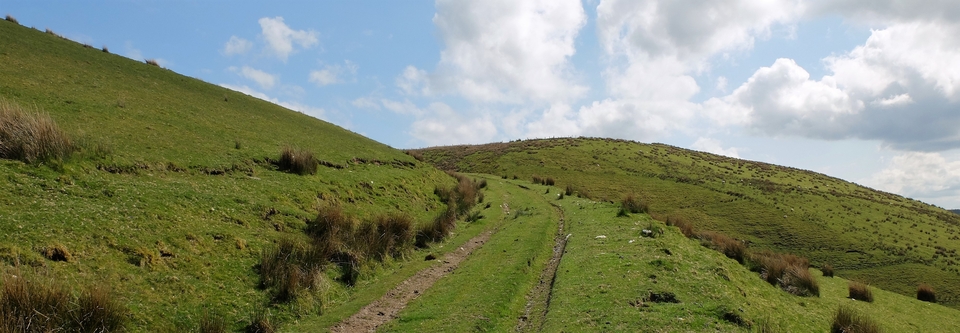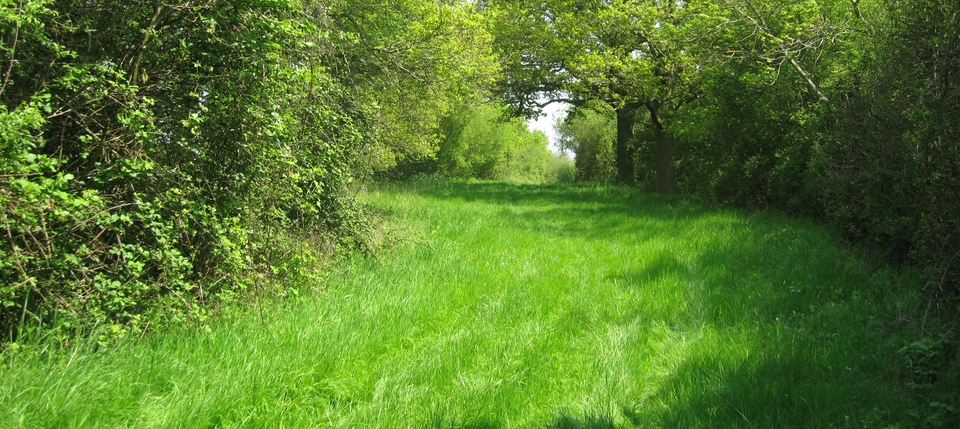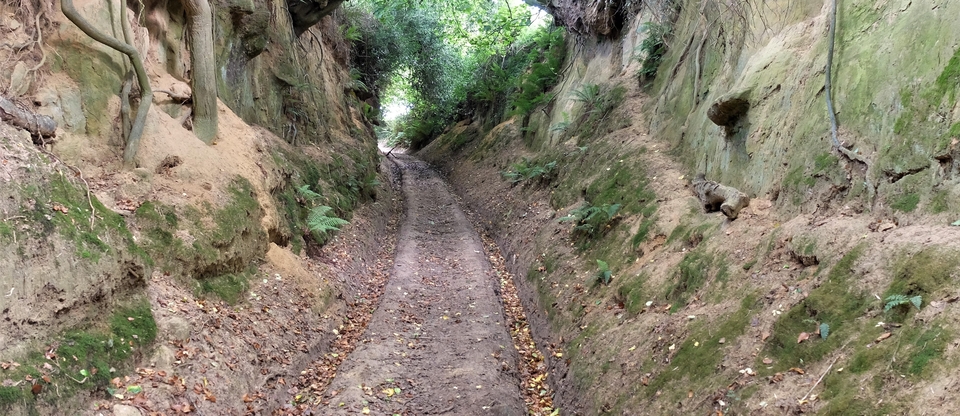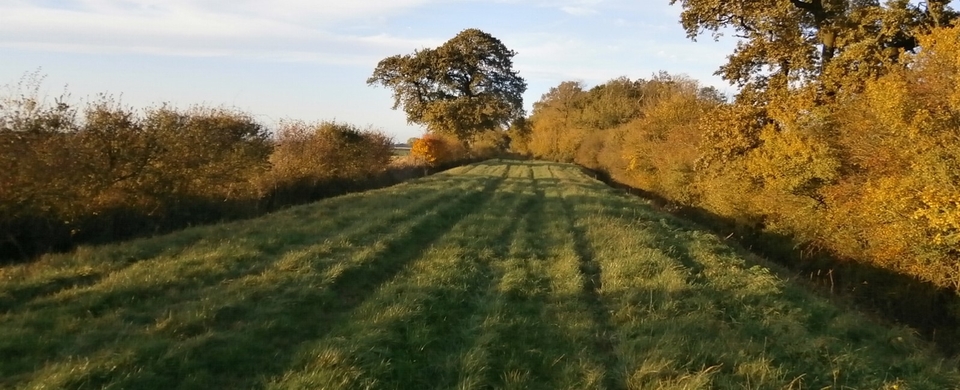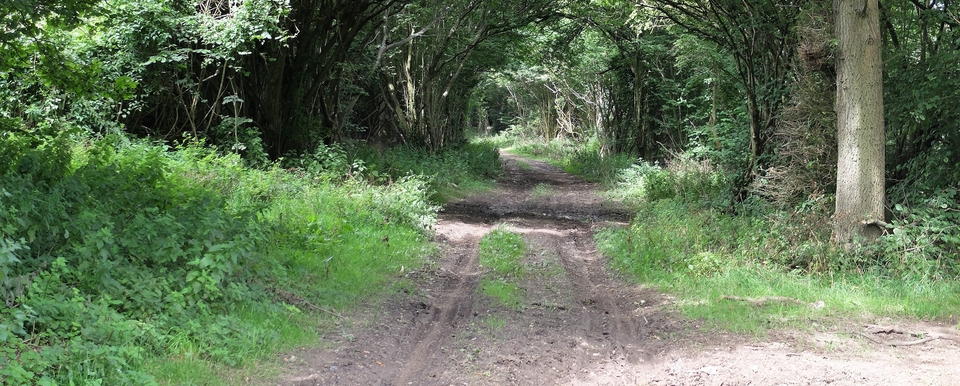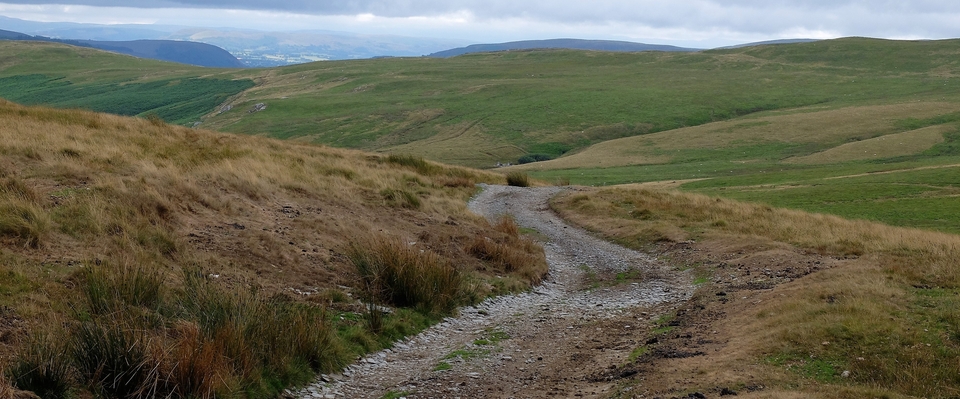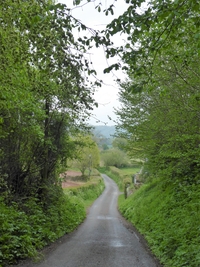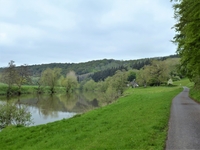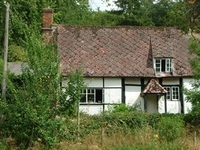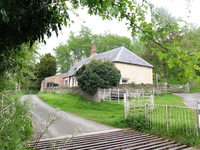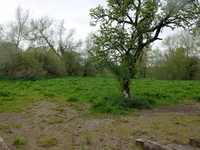Hole-in-the-Wall
From Strong's Handbook to Ross-on-Wye (1868):
“The drove road through Fownhope and Brampton Abbotts in a bad state but still used by drovers in 1863.”
The Ross to Gloucester railway line had finally opened in 1855 so one can guess that the drovers referred to were heading south for the station at Ross. The route they took along the Wye through the Perrystone estate is a tourist haven (heaven? – see #1,2) and at the heart of the route is Hole-in-the-Wall (SO 610286).
The settlement was called Eaton Tregoz (later Tregoes) from the C13, but the DB calls it Turlstane meaning Hole-stone, which explains the insubstantial name. But it was required to pay 50 lumps of iron and 6 salmon yearly to the Lord of the Manor, an interestingly substantial feudal due which was explained to me by Mark Eardley. The left bank of the Wye was a hive of industry 250 years ago, he says: the plentiful trees were coppiced to provide charcoal and iron ore was mined in the area. So, a sort of 18C Coventry.1
There was a castle (= fortified manor house) which is now an outdoor adventure centre, Court Farm. Eaton is a common name for a settlement by the river; Tregoz is derived from the Troisgots family of Manche, a department of Normandy. So now you know.
We started from the wrong end, at Brampton Abbots, but the route became charminger & charminger as we went along. Most charming of all were our encounters with the folk we met: a couple from Ross on a walk, a breeder of Pedigree rams on a pushbike with (almost) indestructible tyres who I was certain was a priest – we met him on Foy footbridge – and a woman on the way to pick up her son from school. She was quite content to let him wait for a bit longer while she told us about The Anchor and Can.
First, the bridge. The original C19 one was built by public subscription “to let the parishioners of ‘English Foy' on the left bank [of the Wye] attend the parish church in Welsh Foy without ford or ferry being required.” Sounds fine, but there's a more likely explanation: the pub was on the English side.
So to the pub, The Anchor & Can. #3 shows it 20 years ago (at a guess). It has a C15 cruck frame, apparently. #4 is the pub's modern incarnation, a guest house. I was interested in the field opposite (#5): just the right size for an overnight stance.
But the pub wasn't for drovers only: the Foy ferry took people & goods across the Wye (as 25 other ferries did between Hereford and Chepstow in the C19) and the ferry boatmen got thirsty too. There was even an up- and downriver service for tourists, from 1770 on, though the clientele of the A&C wouldn't have appealed to all of them: we were told it was a brothel too.
So it's not a complete surprise that there was a murder there in 1853, when George Davies, a local constable, was beaten to death with a stake on May 30th – or hit with a stone; it's hard to work out which was the fatal blow. At the trial in June, six men were convicted of manslaughter; four were released. One man was transported for seven years, the other was given 18 months hard labour. Tough times.
But the most interesting thing was the evidence at that trial of Joseph Hardwick, publican at the A&C, who said: “Near my house is a beer shop kept by Mr George Tommy, which is usually closed at 10pm. At that hour a number of persons came in from there and at 11pm I told them I should draw no more drink as my time was up for closing.”
Two drinking houses in that tiny place!
1William Gilpin documented his journey from Ross to Chepstow in detail when he visited in 1770. He wrote “… there are many works carried out by fire; and the wood being maintained for their use, are periodically cut down. As the larger trees are generally left, a kind of alternacy takes place: what is, this year, a thicket, may next year be an open grove. Many of the furnaces, on the banks of the river, consume charcoal, which is manufactured on the spot; and the smoke which is frequently seen diffusing from the sides of the hills: and spreading its thin veil over a part of them, beautifully breaks their lines and unites them with the sky…” Thank you to Mark Eardley for this snippet.
